
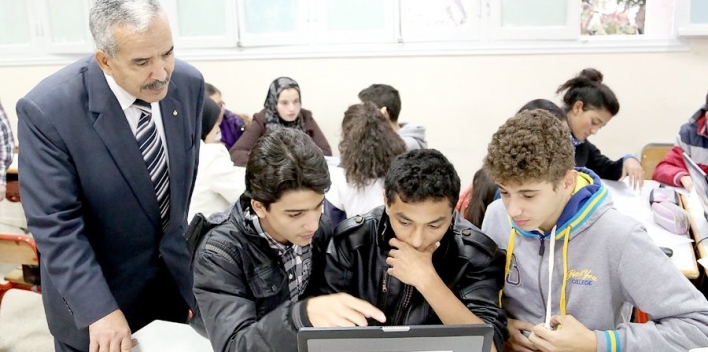
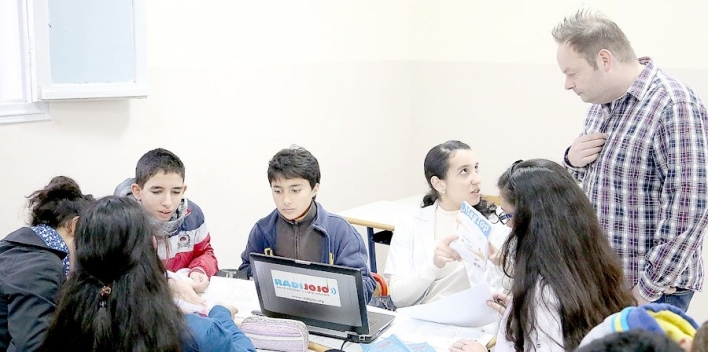
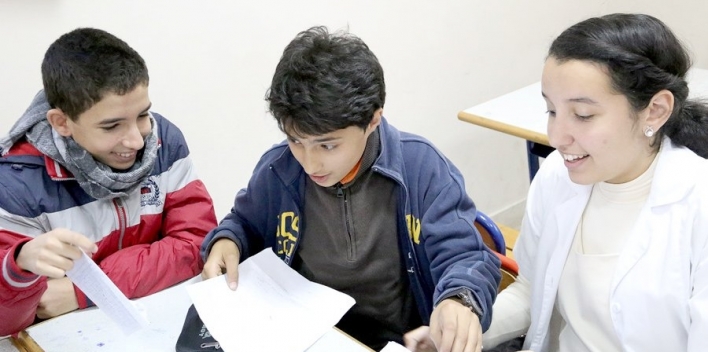
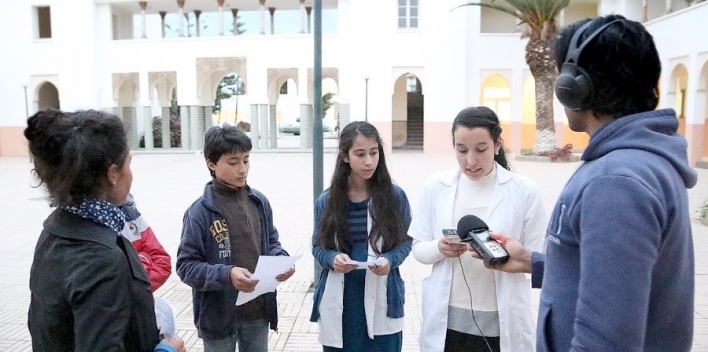
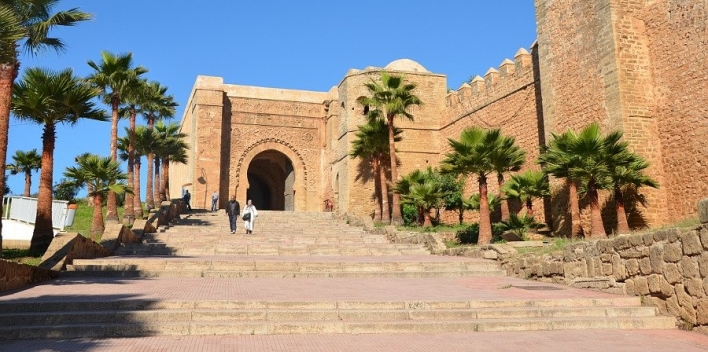
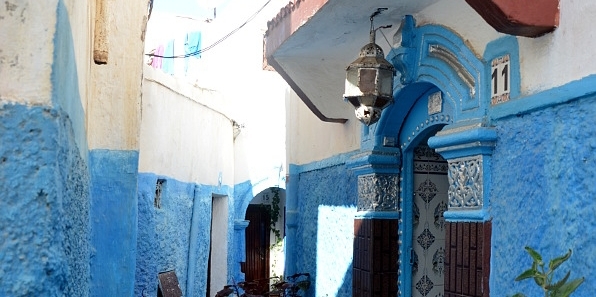
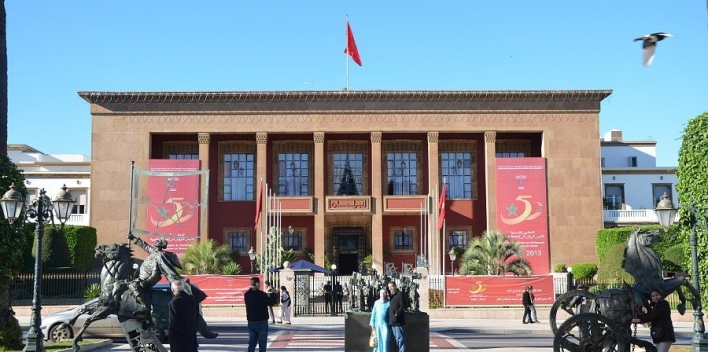
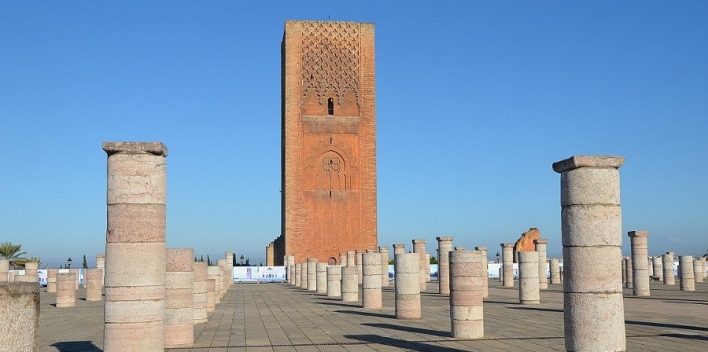
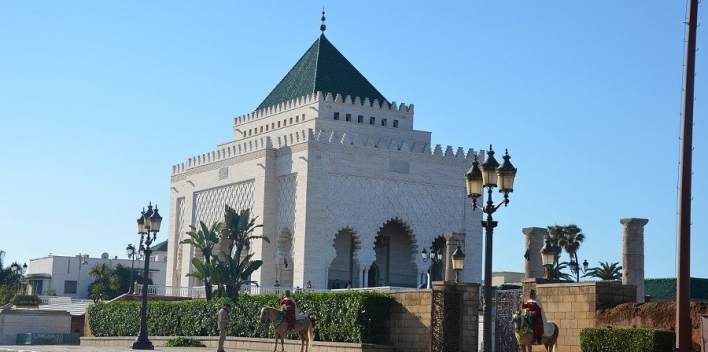
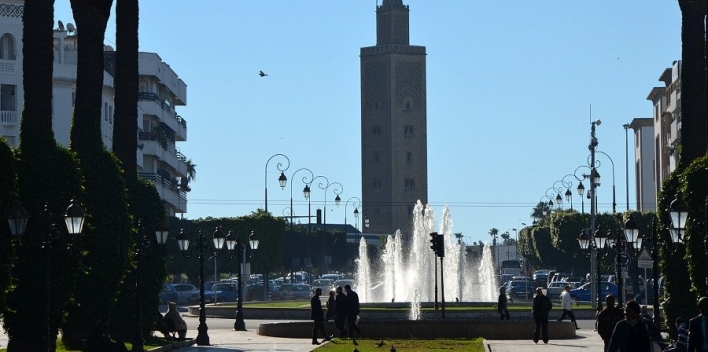
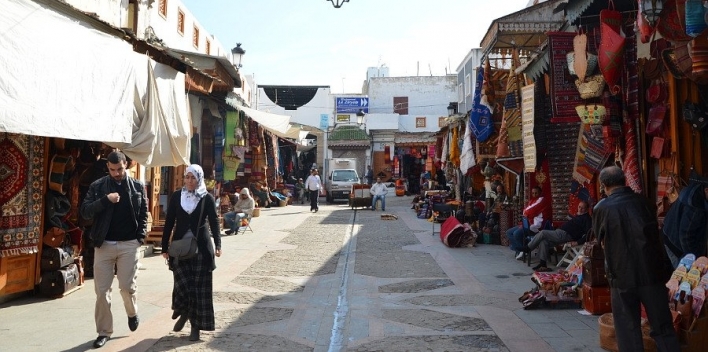
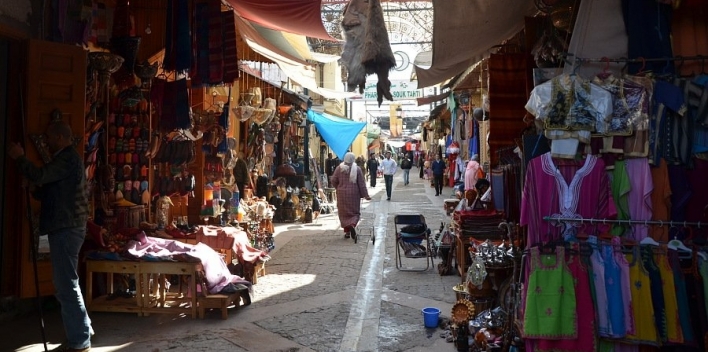
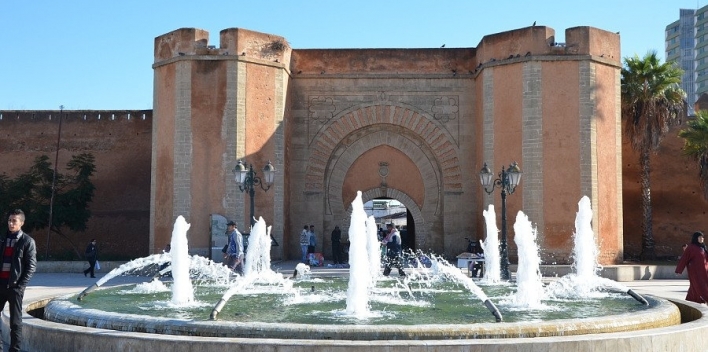
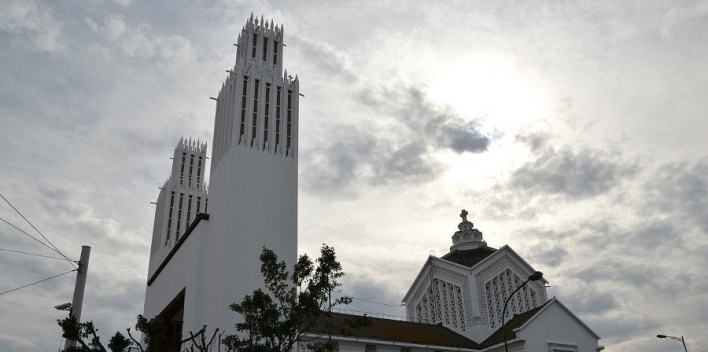
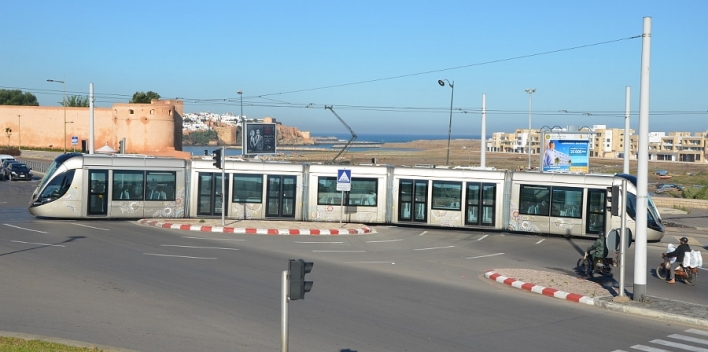
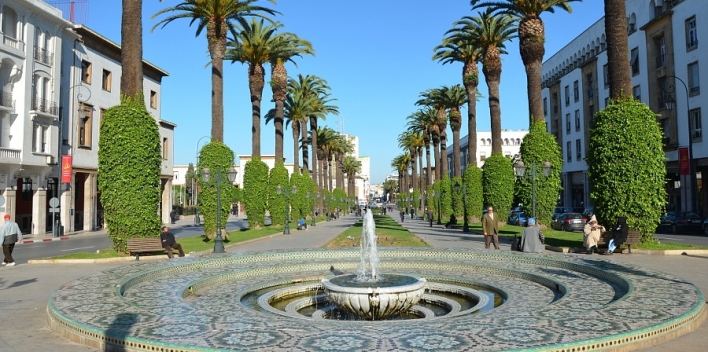
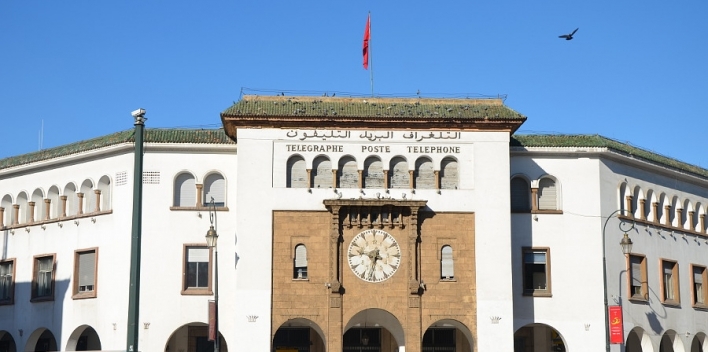
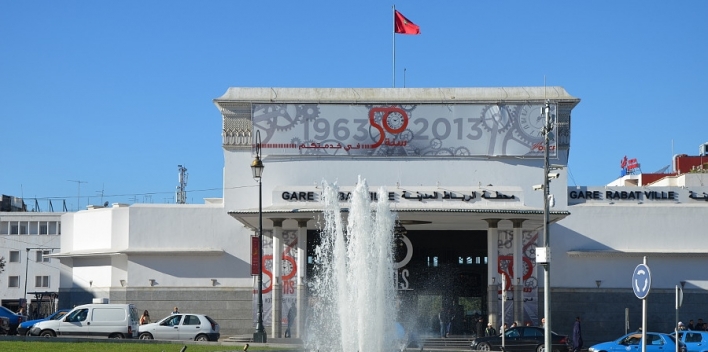
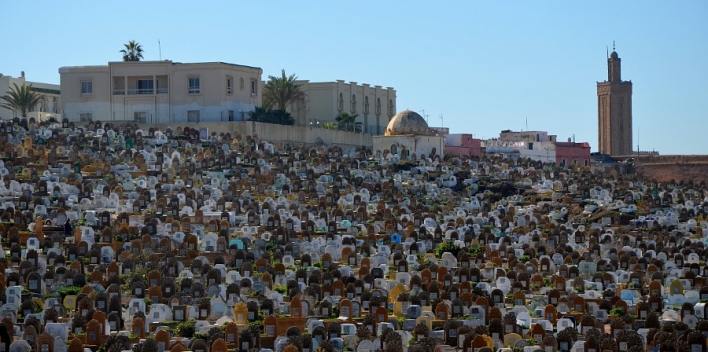
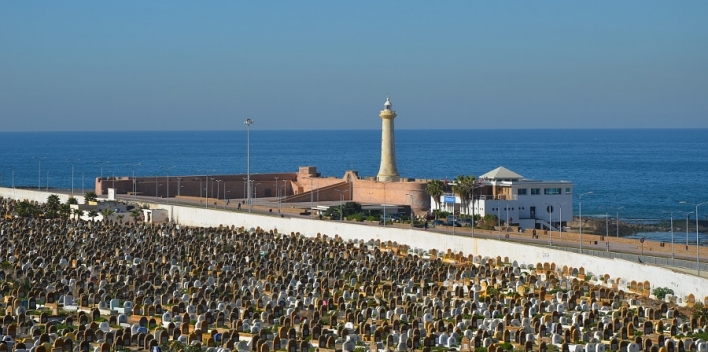
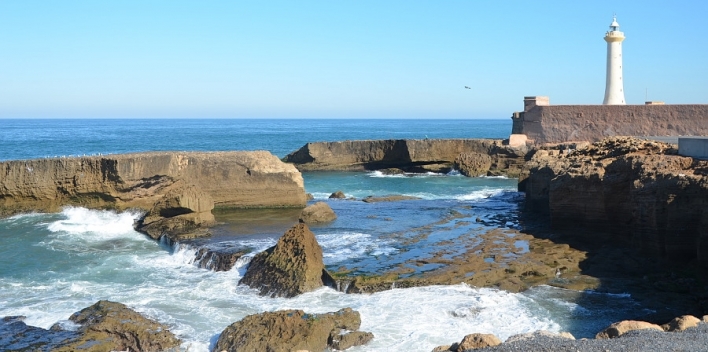
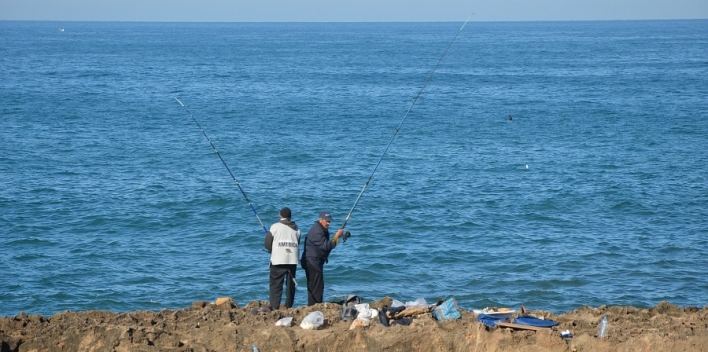
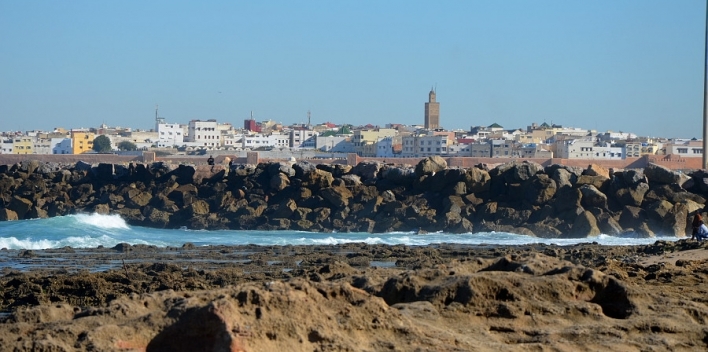
Please kindly note: We have never blogged before – so this is our first post ever; many thanks to Radijojo’s Holger for his support and his wonderful photos and to Wikipedia for the text.
Rabat is the capital city of Morocco in North Africa. Over 2 million people live in Rabat, making it the country’s second largest city. Rabat is located on the Atlantic ocean, but Casablanca further south along the coast is the main port. Rabat is where the government is located, as well as the King of Morocco, but it’s not the commercial capital (that would be Casablanca). Rabat has a rich history but is a fairly new capital, the French gave it this status in 1912 and it remained the capital as per the King’s wishes, after independence in 1956.
Rabat is a very pleasant capital, and not as congested as some other Moroccan cities. The boulevards are wide, the souqs are not too hectic and there’s a cosmopolitan feel to the outdoor cafes and well-dressed middle classes that live and work here. As with many Moroccan cities, it’s divided into the Medina (old-walled city) and the Ville Nouvelle (new city, built by the French).
Arabic and French are the most common languages you’ll hear on the streets of Rabat.
The Kasbah of the Oudayas in Rabat
The Kasbah of the Udayas is a kasbah in Rabat, Morocco at the mouth of the Bou Regreg river opposite Sale. It was built during the reign of the Almohads. When the Almohads had captured Rabat and destroyed the kasbah of the Almoravids in the town, they began reconstructing it in AH 544 / AD 1150. They added a palace and a mosque and named it al-Mahdiyya, after their ancestor al-Mahdi Ibn Tumart. After the death of Yaqub al-Mansur (AH 595 / AD 1199) the kasbah was deserted.
The Parliament of Morocco is located in Rabat, the capital of Morocco. The role of Parliament, and the respect of the monarchy for its integrity, has increased considerably since 1999, when Mohammed VI took the throne. However, the power of Parliament is still being limited as it is the King who appoints the prime minister and on proposition from the latter, the members of government.
Hassan Tower or Tour Hassan is the minaret of an incomplete mosque in Rabat, Morocco. Begun in 1195, the tower was intended to be the largest minaret in the world along with the mosque, also intended to be the world’s largest. In 1199, Sultan Yacoub al-Mansour died and construction on the mosque stopped. The tower reached 44 m (140 ft), about half of its intended 86 m (260 ft) height. The rest of the mosque was also left incomplete, with only the beginnings of several walls and 200 columns being constructed. The tower, made of red sandstone, along with the remains of the mosque and the modern Mausoleum of Mohammed V, forms an important historical and tourist complex in Rabat.
Instead of stairs, the tower is ascended by ramps. The minaret’s ramps would have allowed the muezzin to ride a horse to the top of the tower to issue the call to prayer.
The Mausoleum of Mohammed V is a historical building located on the opposite side of the Hassan Tower on the Yacoub al-Mansour esplanade in Rabat, Morocco. It contains the tombs of the Moroccan king and his two sons, late King Hassan II and Prince Abdallah. The building is considered a masterpiece of modern Alaouite dynasty architecture, with its white silhouette, topped by a typical green tiled roof, green being the color of Islam. A reader of the Koran is often present, having his assigned seat. Its construction was completed in 1971. Hassan II was buried there following his death in 1999.
Mosque Sounna is located on Avenue Moulay Hassan and is, at the moment, the biggest mosque in Rabat. It was first built by Sultan Sidi Mohammed Ben Abdellah in the 18th century. It was later renovated several times. During the reign of King Hassan II, the minaret of the Mosquée Sounna was moved stone by stone from the northern part to the southern part of the mosque. The mosque has a neo-Moorish architectural style.
Made of adobe in the 12th century, the Andalusian ramparts protect the south side of the medina. The rectilinear layout of the old city is impressive as it is very different from the traditional mazes of streets.
Saint Pierre Cathedral is a religious sight. It is still working. The cathedral was built in the 20th century during the French period in Morocco. The cathedral is famous for its pipe organ, amazing stain glass windows with images that depict the life of Jesus and marvelous mosaics that show the twelve Stations of the Cross.
The Rabat-Sale tramway is a tram system which was put into service on May 23, 2011 in the Moroccan cities of Rabat and Sale. The network has two lines for a total length of 19 km (11.8 mi) and 31 stops. It is operated by Veolia Transdev with Alstom Citadis trams.
The Post of Morocco general office is located on Avenue Mohammed V corner Rue Soekarno in a beautiful piece of modern Moroccan architecture. The building is white and above the entrance door there is a big clock. The faУЇade of the structure is fascinating. The Post Office on Avenue Mohammed V is considered a Rabat landmark.
Rabat is served by two principal railway stations run by the national rail service, the ONCF. Rabat-Agdal is the main inter-city station, from which trains run south to Marrakech or El Jadida and north to Tanger, and then on either to Meknes, Fes, Taza and Oujda.
Fort de la Calette Light – Lighthouse
Tower Height: 79
Height of Focal Plane: 102
Characteristic and Range: Two white flashes (1 second and 3 seconds) every 6 seconds, visible for 16 nautical miles.
Date Established: 1920
Date Present Tower Built: 1920
Rabat is located on the Atlantic Ocean at the mouth of the river Bou Regreg.
Sale is a city in north-western Morocco, on the right bank of the Bou Regreg river, opposite the national capital Rabat, for which it serves as a commuter town. Founded in antiquity as a Phoenician colony, it became a haven for pirates as an independent republic before being incorporated into Alaouite Morocco. The city’s name is sometimes transliterated as Salli or Sallee. The National Route 6 connects it to Fes and Meknes in the east. Its population is approximately 800,000.

















